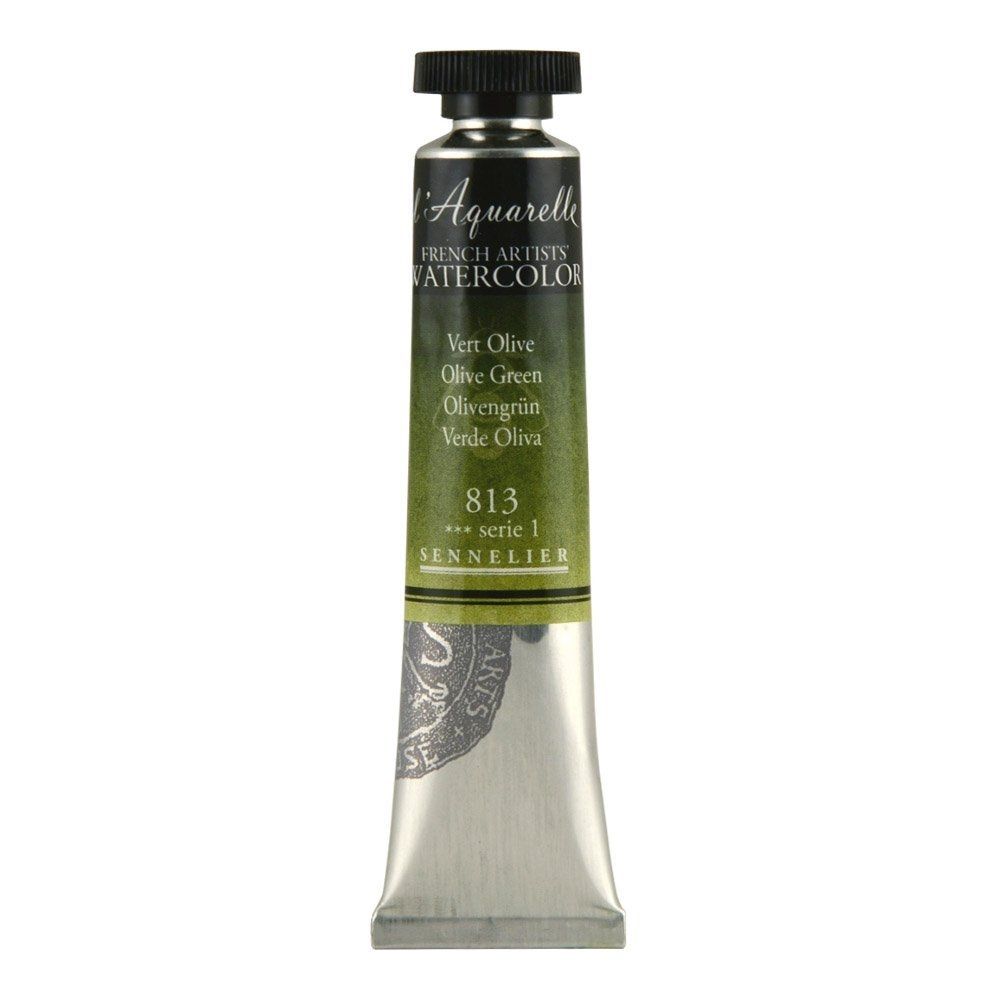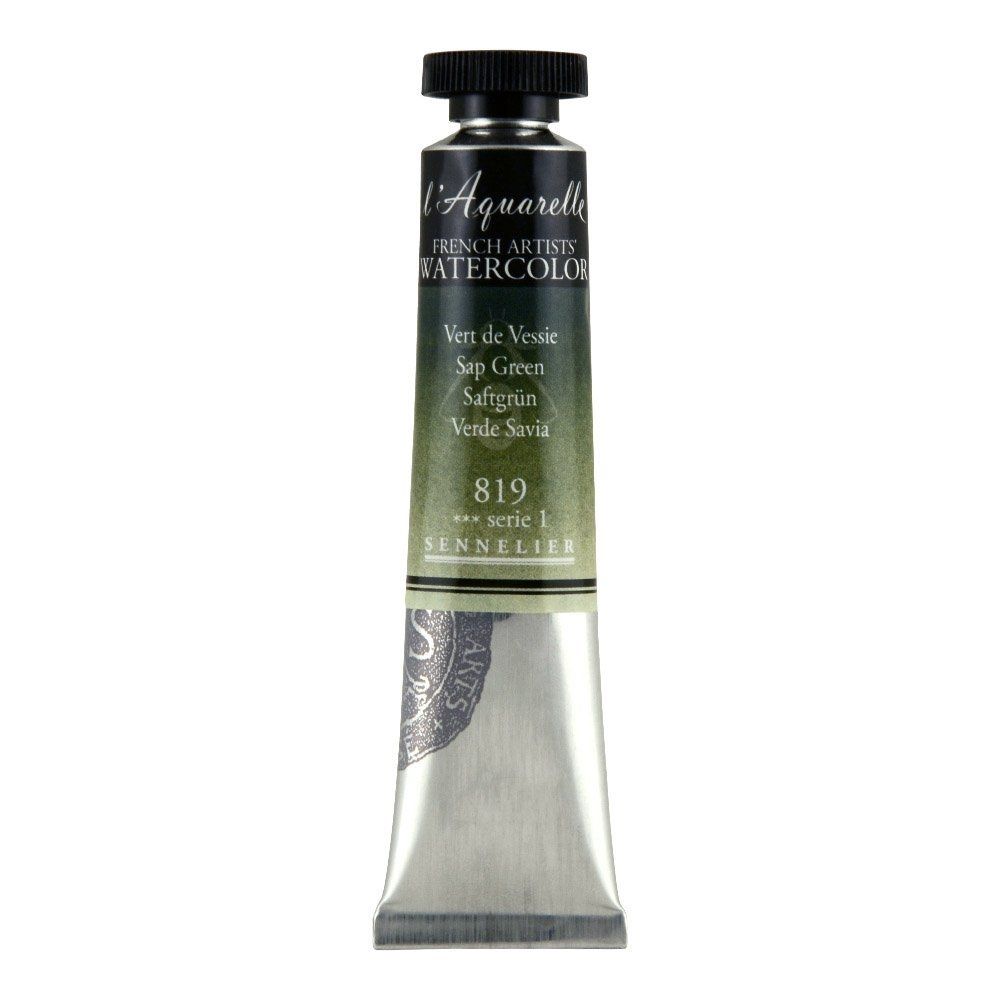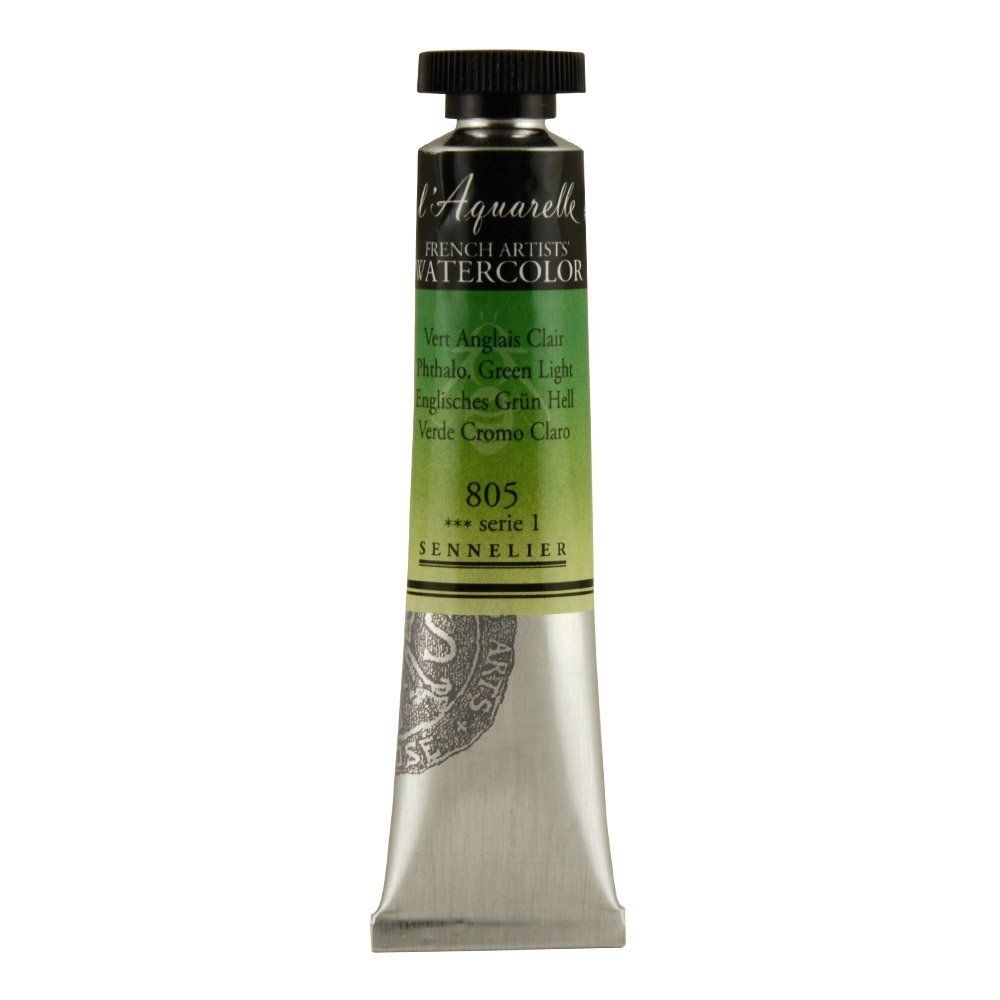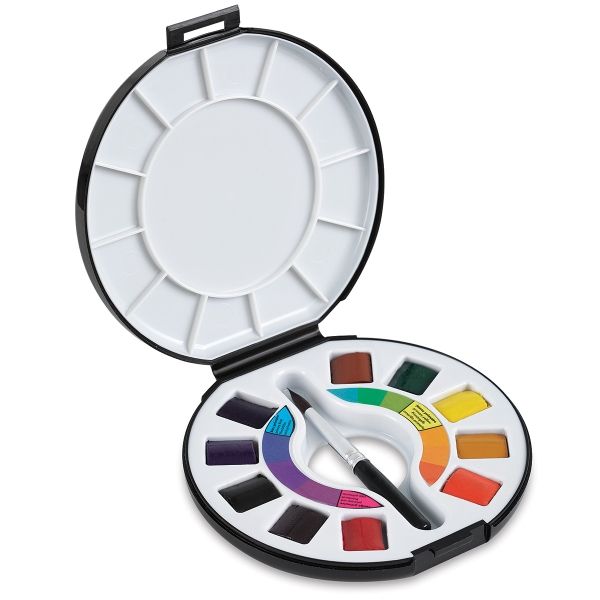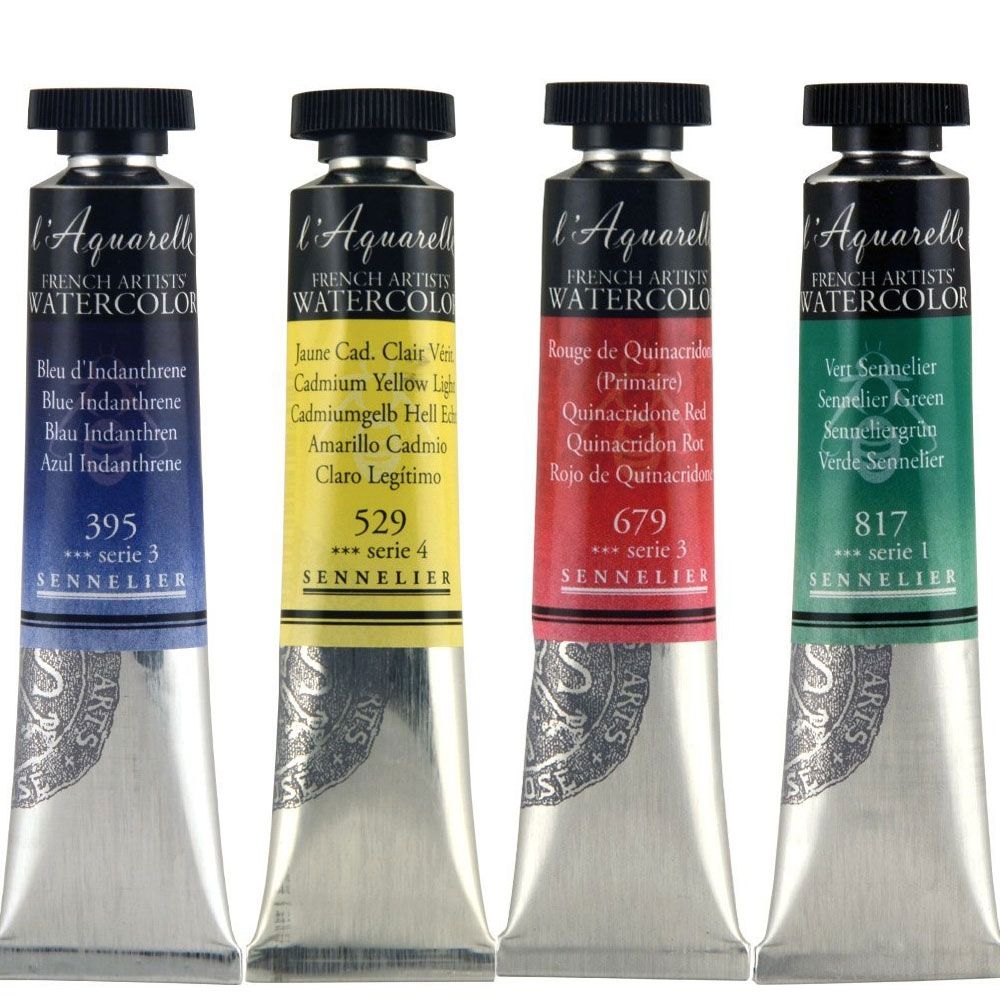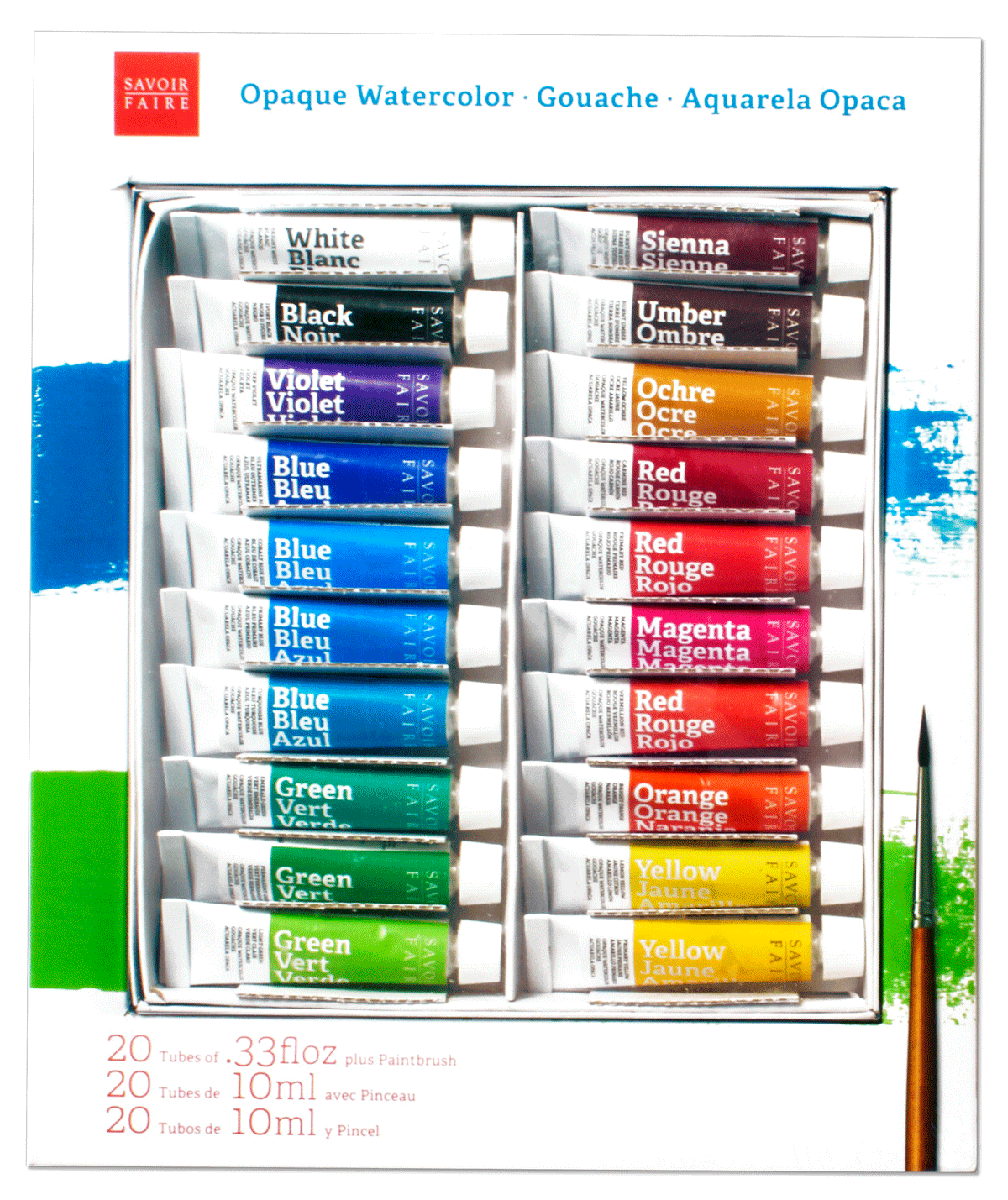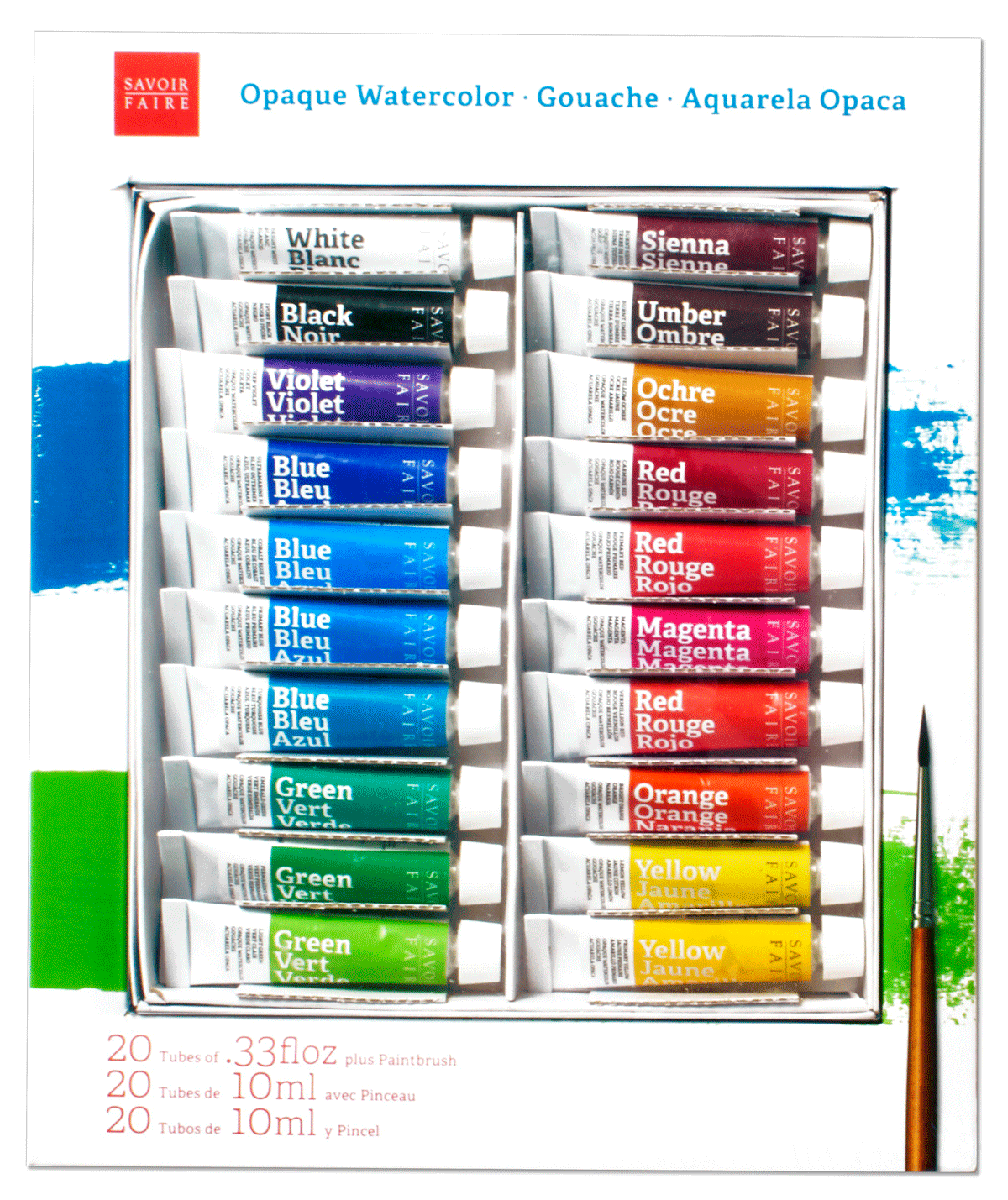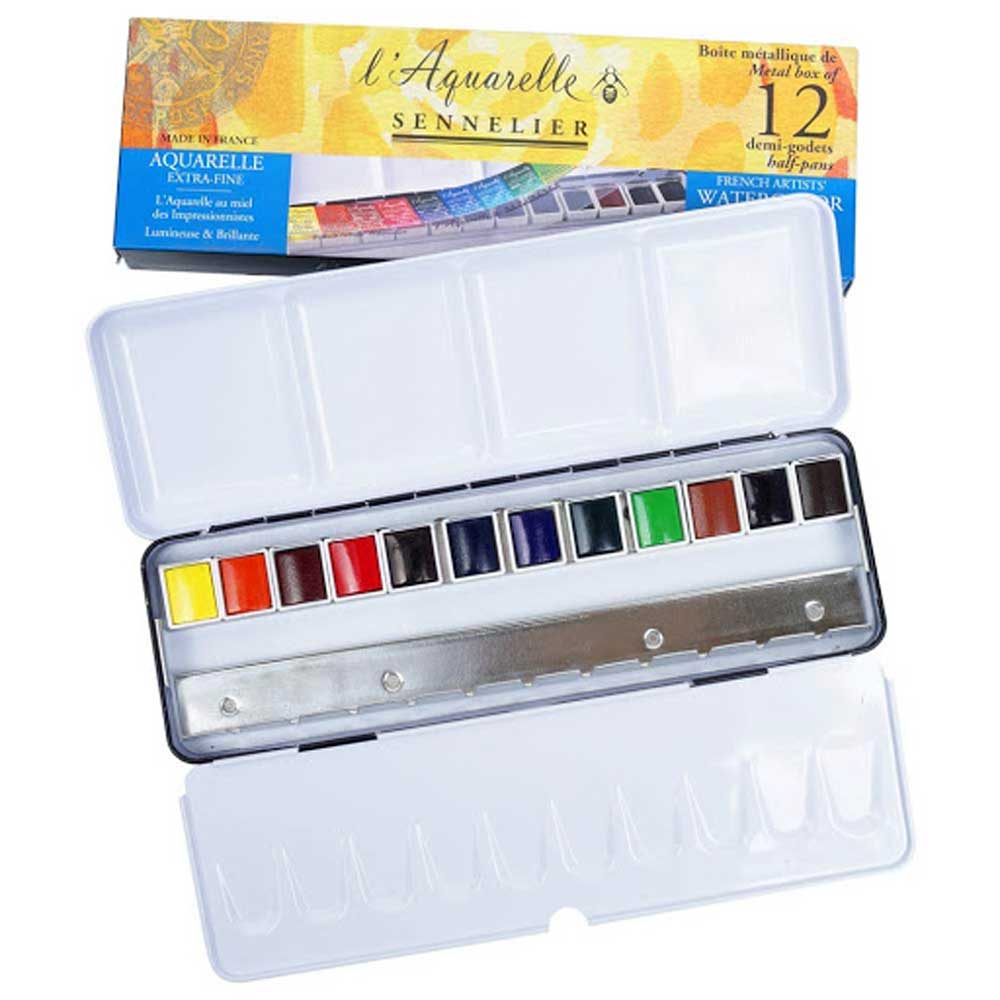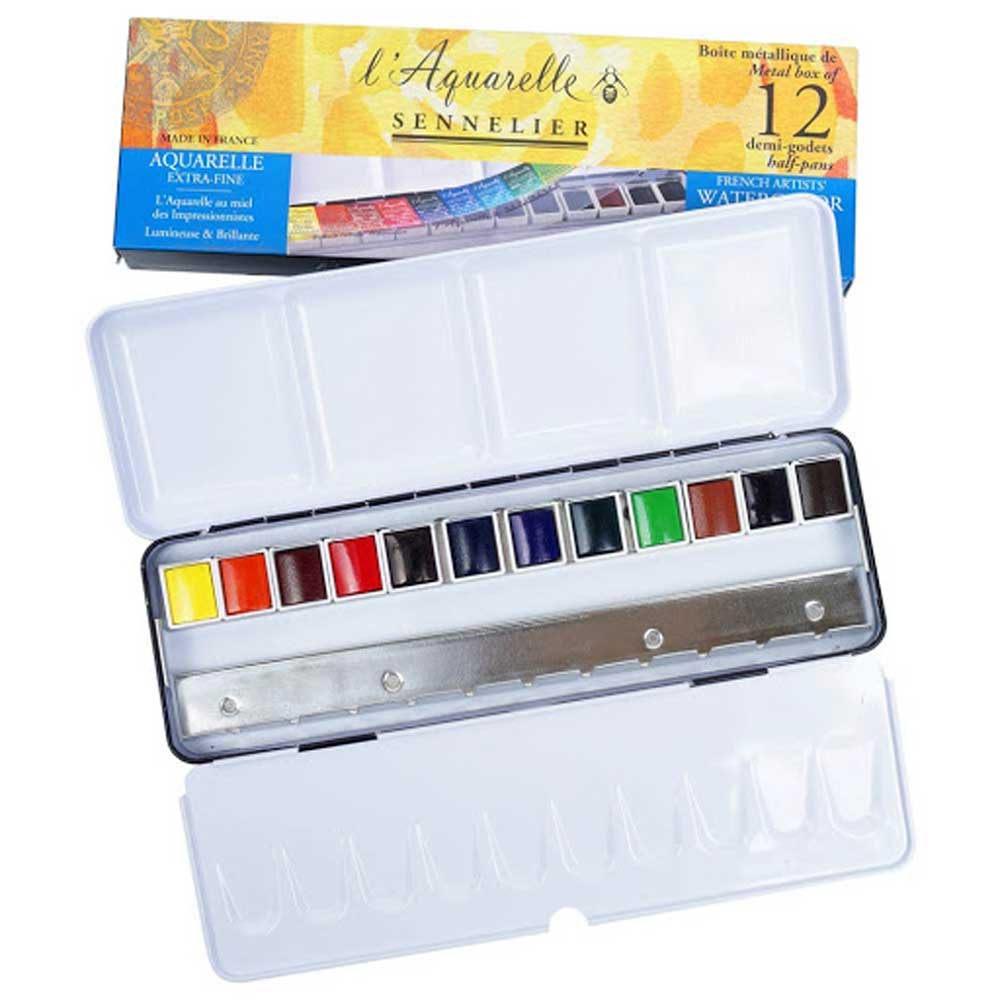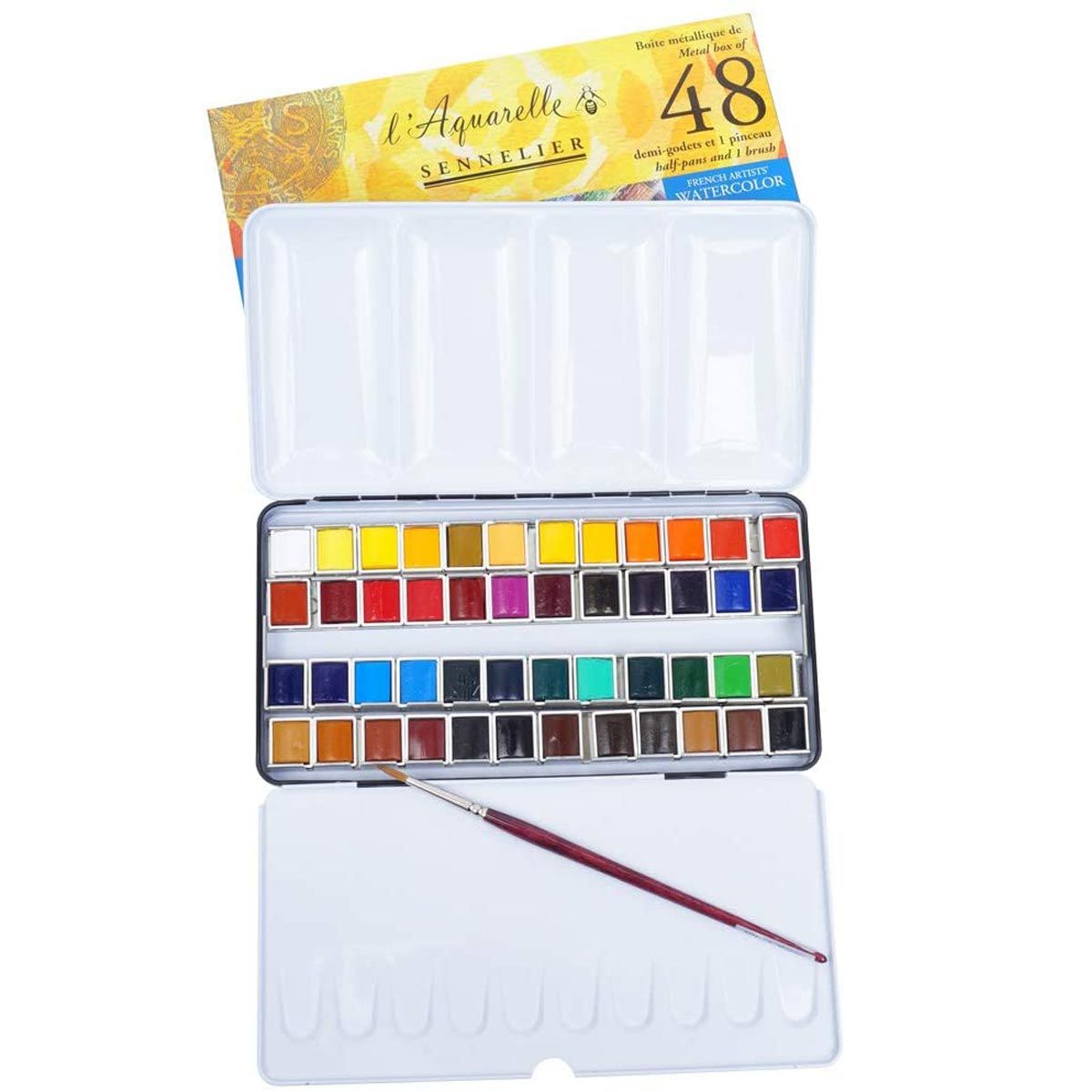Sennelier Watercolour S1 Olive Green (813) 21 ml
Olive Green (813) Nickel Azo Yellow is a transparent, moderately staining yellow pigment with high tinting strength. Phthalo Green is a transparent, cool, bright, high-intensity colour. An excellent base colour for mixing a range of bright greens. Its tinting strength can overpower other colours. This pigment most closely resembles the discontinued and toxic Verdigris.
- Pigment Name: PY150—Nickel Azo Yellow: PG36—Phthalo Green: PBr23—Van Dyke Brown
- Pigment Type: PY150-Inorganic; PG36-Organic; PBr23-Organic, disazo
- Series: 1
- Opacity: Transparent
- Permanence/Lightfast: (n.r.) ***
Sennelier Watercolour S1 Olive Green (813)
Olive Green (813) Nickel Azo Yellow is a transparent, moderately staining yellow pigment with high tinting strength. It is considered a good colour match in botanical and landscape painting for natural gamboge (NY24), a historic yellow pigment with fair to poor lightfastness.
Phthalo Green is a transparent, cool, bright, high-intensity colour. An excellent base colour for mixing a range of bright greens. Phthalo Green is considered a good alternative to Viridian and can emphasize mineral colours in various tints. However, its tinting strength can overpower other colours. This pigment most closely resembles the discontinued and toxic Verdigris.
PY150—Nickel Azo Yellow is a transparent, moderately staining yellow pigment with high tinting strength. It is considered a good colour match in botanical and landscape painting for natural gamboge (NY24), a historic yellow pigment with fair to poor lightfastness. Chemical Name: nickel azomethine yellow
Permanence: Nickel azomethine yellow has excellent lightfastness.
Toxicity: Nickel azo yellow pigment is mildly toxic and often labelled hazardous. Avoid respiratory and skin exposure to pigment dust. It should be disposed of properly with other hazardous wastes, not washed down the sink. However, the contribution of artist pigments to levels of nickel metal complexes in the environment is almost insignificant. Nickel is often present in the environment naturally. Nickel is used heavily in steelmaking and many industrial processes and products.
History: Nickel azomethine yellow has been developed as an artist's pigment because it is closely matched to gamboge, a historic yellow.
Alternate Names: Gamboge Hue, New Gamboge.
PG36—Phthalo Green is a transparent, cool, bright, high-intensity colour used in oil and acrylics. It comes from a Phthalocyanine Blue pigment where most hydrogen atoms have been replaced with chlorine, forming highly stable molecules. Pigment PG36 differs from PG7 in that a portion of the chlorine atoms are replaced with bromine atoms, which are reactively similar but cause a yellow shift that is especially noticeable in mixtures.
Phthalo Green has similar pigment properties and permanence to Phthalo Blue. It is slow drying and an excellent base colour for mixing a range of bright greens. Phthalo Green is considered a good alternative to Viridian because it is intense, mixes well, and can be used to emphasize mineral colours in various tints. However, its tinting strength is very high, so it can overpower other colours. This pigment most closely resembles the discontinued and toxic Verdigris. Chemical Name: polybromopolychlorinated copper(II) phthalocyanine.
Permanence: Phthalo Greens are completely lightfast and resistant to alkali, acids, solvents, heat, and ultraviolet radiation. Due to their stability, they are currently used in inks, coatings, and many plastics and are considered a standard pigment in printing ink and the packaging industry.
Toxicity: Phthalo Green has no significant hazards, but it contained PCBs (polychlorinated biphenyls) until 1982.
History: This bright blue-green was developed in 1935 and has been used since 1938.
Alternate Names: Bocour Green, Cyan Green, Intense Green, Monastral Green, Phthalocyanine Green, Rembrandt Green, Thalo Green, Winsor Green.
PBr23—Van Dyke Brown. Properties: n/a
Permanence: n/a
Toxicity: n/a
History: This organic pigment has been called Van Dyke Brown because it is similar to the brown used by Flemish painter Anthony van Dyck, although it is a modern synthetic pigment. In addition to its use in art, it has been used as a pigment for colouring plastics and synthetic fibres.
Alternate Names: Cromophtal Brown, Microlith Brown.
| Size | 21 ml |
|---|---|
| Brand | Sennelier |
| Country of Manufacture | France |
| Type of Store Credit value | Select |










